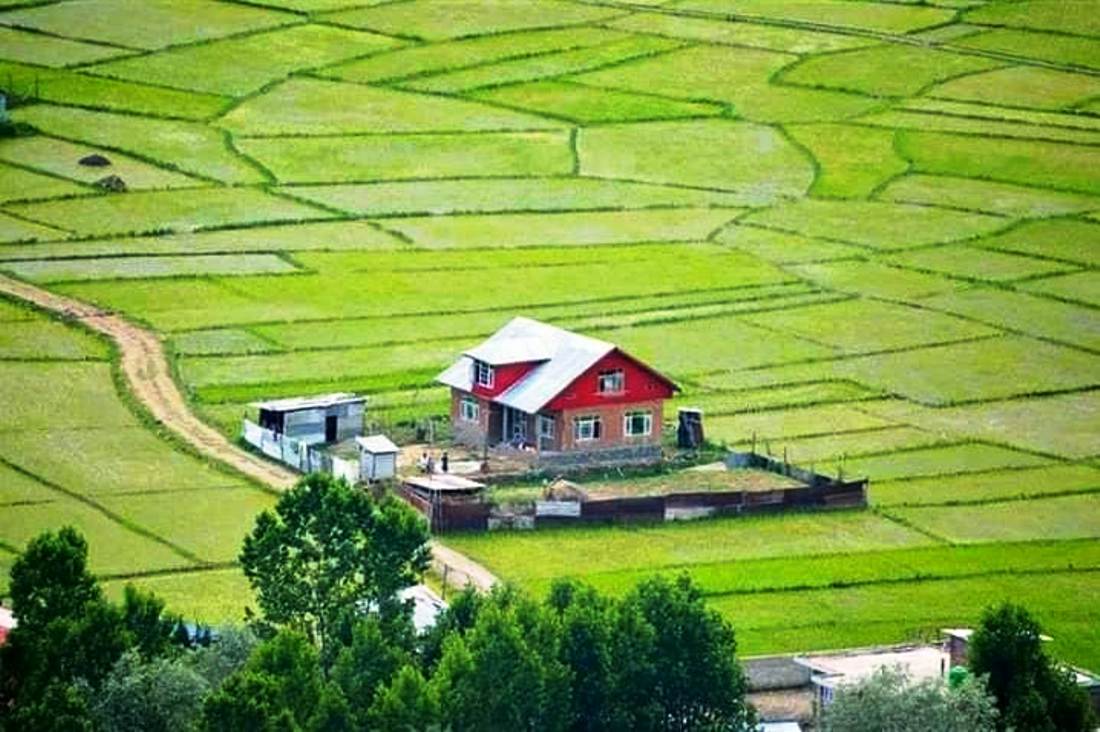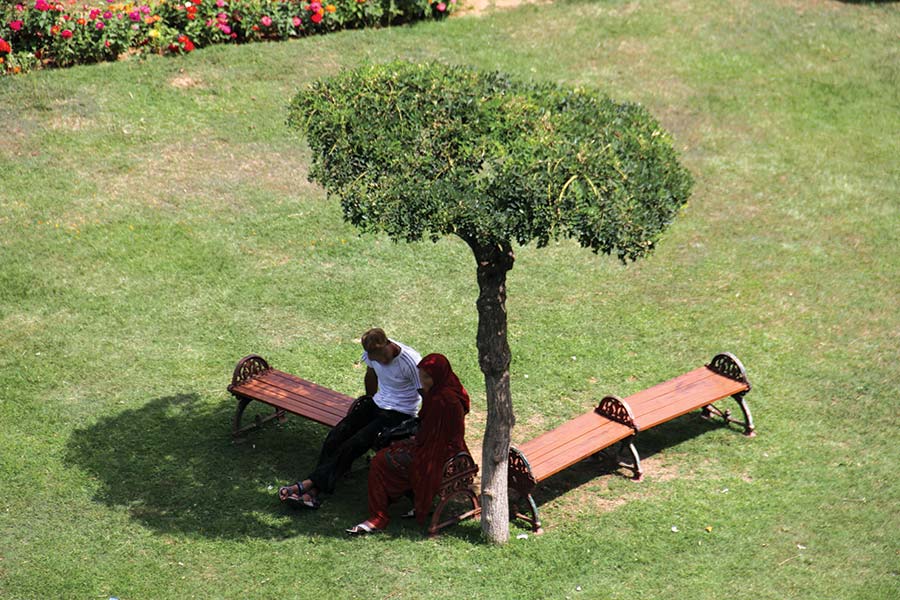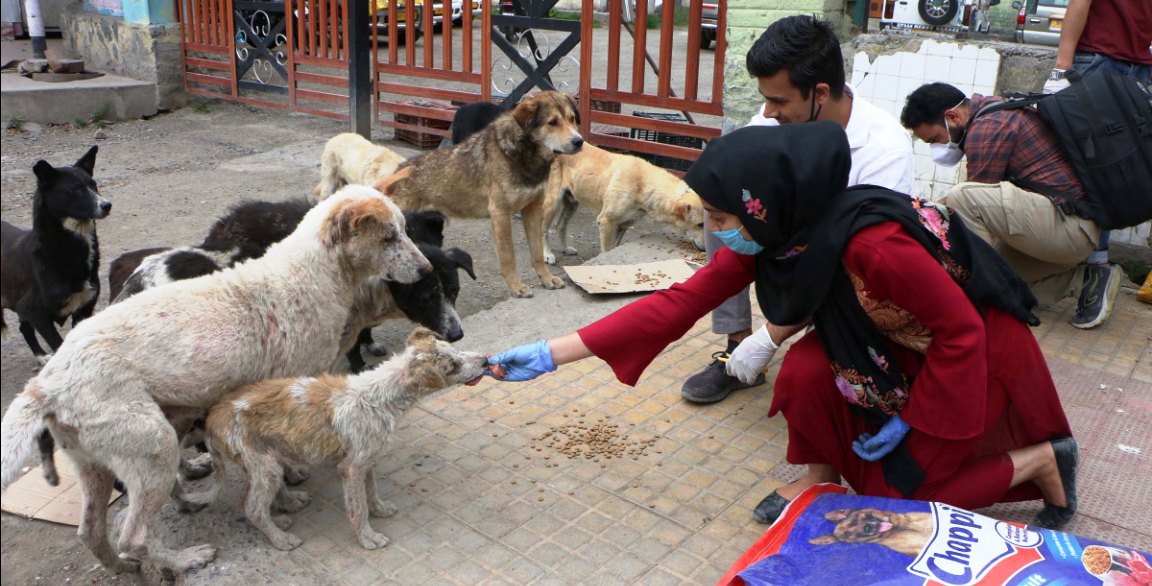by Zakia Qurashi

SRINAGAR: For decades, Kashmir has been witnessing a slow shift in its land-use pattern. The renewed pace the process has acquired has led to stagnation in the yearly production of the paddy.
The land on which paddy was grown is increasingly being converted into orchards. This shift in pattern although not new has been catalyzed by dwindling returns and lesser margins of profit from paddy cultivation. Additionally, the introduction of high-density apple and other fruit varieties, which give increased yield and better profits have also contributed to the changing trend.
At many places, the farmers have been converting the paddy fields into orchards to supplant their income. The paddy fields lining the Baramulla Srinagar highway have been converted into orchards at many places. At some places, paddy fields and orchards even share boundaries and when heavy rains lash the valley, the water spillover also damages the trees.
Acknowledging the shift, Dr Abdul Hamid Hakeem, Dean Faculty of Agriculture at Sher-i-Kashmir University of Agricultural Science and Technology (SKUAST) at Wadura campus said it has happened because of the profitable nature of some crops that have been recently introduced.
“If we go back to the 1950s, the priority of the farmer was to fill his belly. For that purpose, he used to harvest paddy, grow maize, oilseeds and other cereals so that he could sustain himself and his cattle. We used to have a public distribution system where the farmer was assured of the food,” Hakeem said.
Dr Hakeem said that the expansion of orchards started in the 1970s, realizing that there was more revenue to be generated in cultivating fruit crops. He started converting those paddy lands where irrigation was not possible. “So, he cultivated paddy on low lands while orchards on higher reaches to give himself a sense of security.”

“The farmer started putting more and more areas which were conducive for fruit production to use; upper lands, lands beneath these hills, and lower lands. Lower lands are never conducive because of them being waterlogged or flood-prone. His concentration was where we didn’t have irrigation,” Hakeem explained.
However, of late the lower lands have also witnessed conversion and shift from paddy to orchards. On the foothills of these hills and forests, the zone in which paddy was cultivated used to act as a buffer. It thwarted the wild animals coming down from the forests into habitations. But experts now believe, conversion of paddy lands to orchards now attracts wild animals like bears who find food readily available in these orchards.
In the last 15 years, the horticulture department and the efforts university have led to the successful introduction of high-density varieties such as Gala variety. Prior to these varieties, there was an Indo Dutch project which mainly saw focus in areas like Sopore.
While there is no denying the fact that horticulture production has witnessed a sharp spike, the agricultural output has been able to match it. “A high-density orchard gives a yield of 12 tonnes per hectare with almost 90 per cent A-grade fruit,” Hakeem claimed.
Giving details he said that during 2001, rice was grown at 1.4 lakh hectares. In the next decade, there was almost a jump of another one lakh hectares. By 2010, rice cultivation in Jammu and Kashmir was 2.12 lakh hectares while by 2020, the cultivation has only witnessed a small incremental increase from 2.12 to 2.40 lakh hectares.
Explaining the shift, Hakeem said that the cost of production of paddy is increasing day by day. “Labour cost is increasing. Irrigation facilities are not 100 per cent. There’s a shortage of irrigation water.”

“There is a shift in climate. We used to get a huge snowfall from November to March. Now the quantum of snowfall has come down even though the overall precipitation has not witnessed much change. The type of precipitation has witnessed a change and shift,” he added.
He said that Kashmir used to get 30 mm of rain in four days. “Now we get that much rain in one hour. Same with snowfall. The pattern is very erratic. We get rain when we don’t need it. Last month, we witnessed snowfall in the upper reaches.”
Pertinently, two months back, paddy fields in the Pulwama area had gone completely dry because of the failure of the irrigation facility.
With valley’s farmers opting to grow fruits instead of its staple food owing to better returns, there are concerns that the paddy production might be on a downward spiral forcing the already dependent valley to further increase its rice imports from the neighbouring states.















